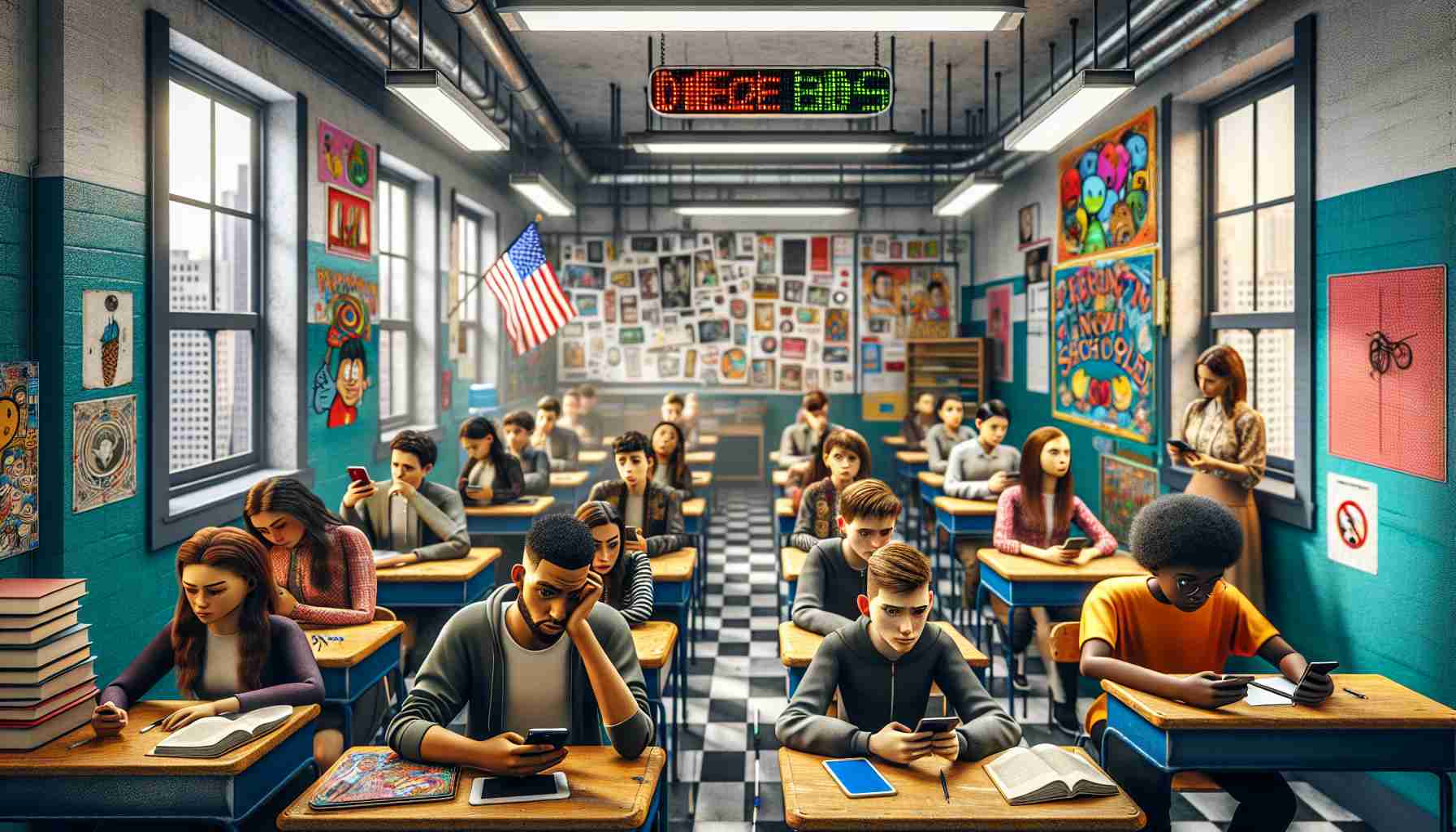In a proactive move to enhance the educational environment, Governor Kathy Hochul is developing a strategy aimed at regulating, and potentially banning, smartphone use within schools throughout New York. The governor’s initiative stems from growing concerns about the negative impact of personal electronics and social media on students’ concentration and mental well-being.
Governor Hochul has embarked on a state-wide listening tour to gather insights on this issue, intending to propose a formal plan by the end of the year for potential adoption in 2025. The proposal is expected to allow students to have basic phones that can send text messages but restrict internet access.
Many educators have voiced their worries regarding smartphone usage in classrooms, highlighting it as a significant problem. There is increasing recognition from health experts, including the U.S. Surgeon General, about the detrimental effects of social media on the mental health of young individuals. Consequently, several school districts, such as the Riverhead Central School District, have initiated federal lawsuits against social media corporations due to their harmful influence on youth.
The New York State United Teachers union recently backed statewide measures to limit smartphone use during school hours, asserting that local authorities should tailor the enforcement of these regulations. They emphasized that teachers should not singularly shoulder the responsibility for implementing these policies and called for state-provided resources to facilitate compliance.
Smartphone Use in Schools: Tips, Life Hacks, and Interesting Facts
As discussions intensify around the regulation of smartphone use in schools, especially with initiatives like those proposed by Governor Kathy Hochul, it’s essential for students, parents, and educators to navigate this landscape effectively. Here are some tips, life hacks, and fascinating insights that can help everyone adjust to potential changes in smartphone policies within educational settings.
1. Set Usage Limits at Home
Establishing boundaries for smartphone use starts at home. Consider setting daily limits on screen time, particularly during homework hours or family time. This habit can help foster concentration and improve students’ ability to focus during school hours.
2. Leverage Technology Wisely
Use apps designed to minimize distractions. There are numerous applications available that can temporarily block social media and other distracting sites when studying or doing homework. Examples include Freedom, Cold Turkey, and StayFocused, which help in maintaining productivity.
3. Encourage Communication Skills
With the increasing tendency to communicate through screens, it’s crucial to foster in-person communication skills among students. Encourage regular family discussions at dinner or group activities that require teamwork and verbal interaction to build confidence in face-to-face conversations.
4. Explore Alternatives to Screens for Learning
Promote non-digital learning resources such as books, educational board games, and hands-on projects. These alternatives can enhance learning without the distractions that smartphones often bring. In addition, consider integrating technology that is beneficial for learning without the social media components.
5. Understand the Mental Health Aspect
It’s essential to recognize the connection between smartphone usage and mental health issues. Research has shown that excessive use of social media can impact self-esteem and contribute to anxiety and depression. Educate students about mindful usage and the importance of taking breaks from screens.
6. Stay Informed About Policies
Keep abreast of the evolving policies regarding smartphone use in schools. Follow news from reputable sources and engage in discussions with school boards or local education authorities to voice opinions or seek clarifications on proposed rules.
Interesting Fact: Did you know that countries like France have already implemented laws banning smartphones in primary and middle schools? These regulations aim to enhance the learning environment and reduce distractions, highlighting the international movement towards mindful smartphone use in education.
Related Links for Further Learning:
Read more from The New York Times on the impact of technology in education.
Visit Edutopia for innovative educational practices and strategies.
Implementing these tips and being aware of the broader conversation around smartphone use can help cultivate a more focused and supportive educational journey for students.























